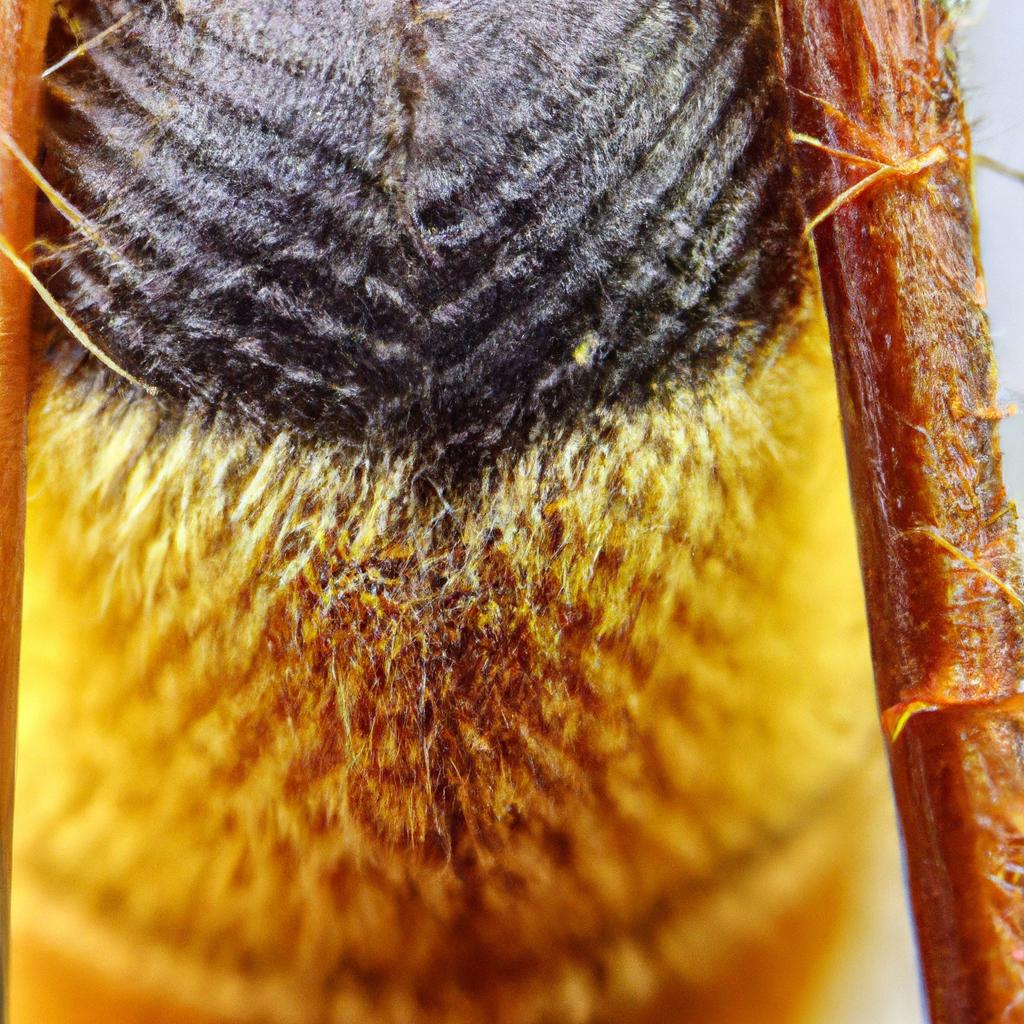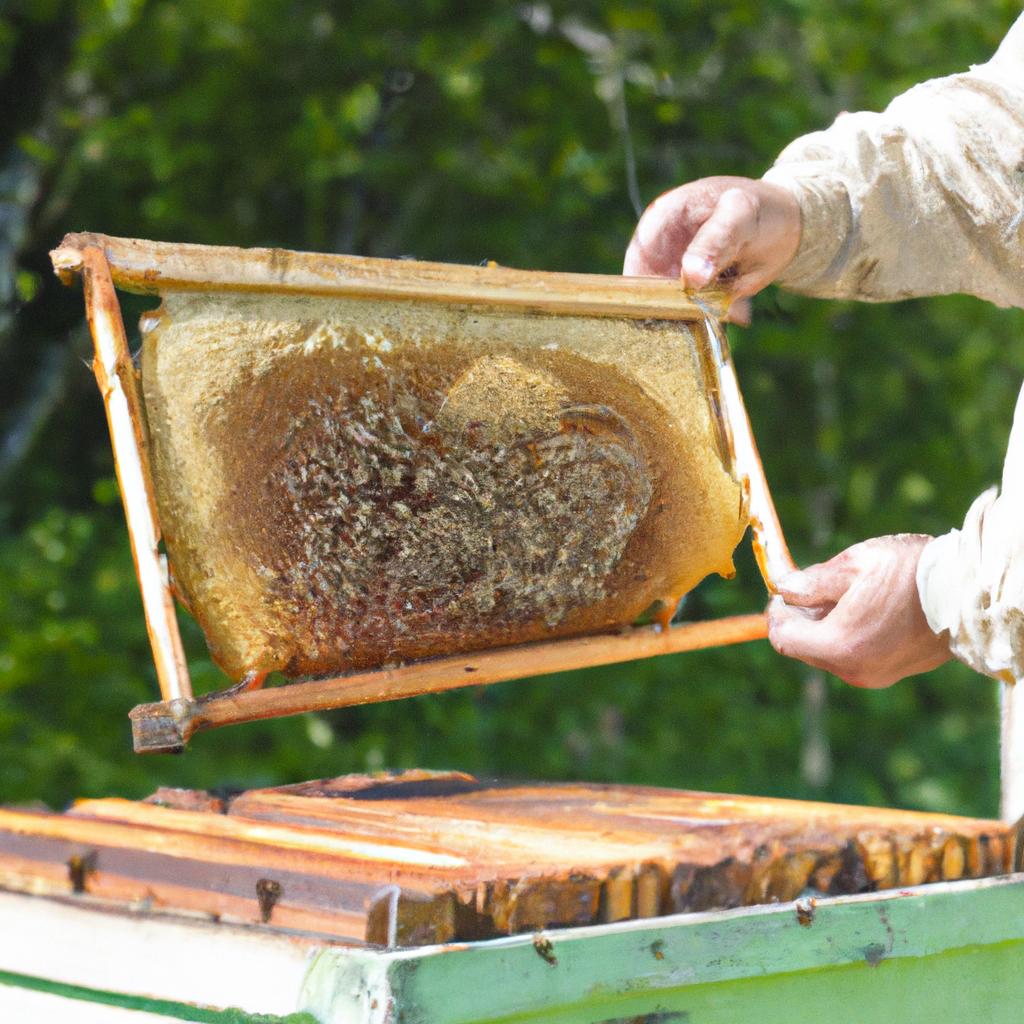As the leader of a bee colony, the queen bee has a vital role to play in ensuring the hive’s survival. One of the most crucial responsibilities of a queen bee is to lay eggs, which eventually hatch into bees that will continue to build and maintain the colony.
In this article, we will explore the anatomy and reproductive system of queen bees, the egg-laying process, and the factors that determine the number of eggs laid. Additionally, we will discuss the importance of understanding the queen bee’s egg-laying capacity and its implications for the colony’s health and productivity.
Queen Bee Anatomy and Reproductive System

To understand how a queen bee lays eggs, it’s crucial to know its anatomy and reproductive system. A queen bee is larger than other bees and has a unique physical structure that enables it to carry out its role effectively.
The queen bee has an elongated abdomen that houses specialized glands, including the ovaries, spermatheca, and mandibular glands. The ovaries are responsible for producing eggs, while the spermatheca stores sperm from male bees, which is used to fertilize the eggs during the egg-laying process.
The mandibular glands produce pheromones that regulate the behavior of the other bees in the colony, ensuring that they work together to maintain the hive’s health and productivity.
The queen bee’s reproductive system is also unique. The queen bee mates only once in its lifetime, shortly after emerging from its pupal stage. During mating, it stores enough sperm in the spermatheca to fertilize all the eggs it will lay for the rest of its life.
In the next section, we will explore the egg-laying process of queen bees in detail.
Egg-Laying Process of Queen Bees

Queen bees have a remarkable egg-laying process that enables them to produce thousands of eggs throughout their lifetime. The process begins when the queen bee moves to the edge of the comb and extends its abdomen, which allows the worker bees to clean and groom its reproductive organs.
Once the queen bee is ready to lay eggs, it selects a cell on the comb and inserts its ovipositor, a specialized tube that extends from its abdomen, into the cell. The queen bee then deposits a single egg and moves on to the next cell, repeating the process until it has laid all the eggs it intends to lay.
The egg-laying process of queen bees is not continuous, and the number of eggs laid varies depending on various factors. In the next section, we will discuss the factors that affect the queen bee’s egg-laying process.
Queen Bee Egg-Laying Capacity
The average number of eggs laid by a queen bee varies depending on various factors. On average, a queen bee can lay between 1,000 and 2,000 eggs per day, with some queen bees laying up to 3,000 eggs per day.
However, the queen bee’s egg-laying capacity can be affected by various factors, including age, genetics, nutrition, and environmental conditions. As the queen bee ages, its egg-laying capacity decreases, and the quality of the eggs it lays may also decrease.
The queen bee’s genetics also play a role in its egg-laying capacity. Some queen bees have been selectively bred for their ability to lay more eggs, while others may have genetic defects that reduce their egg-laying capacity.
Nutrition is also essential for the queen bee’s egg-laying capacity. A queen bee that is well-fed and has access to a variety of pollen and nectar will have a higher egg-laying capacity than one that is malnourished or has limited access to food.
Finally, environmental conditions can also affect the queen bee’s egg-laying capacity. Extreme temperatures or changes in temperature can stress the queen bee, reducing its egg-laying capacity. Additionally, exposure to pesticides or other chemicals can also impact the queen bee’s egg-laying capacity.
Understanding the factors that affect the queen bee’s egg-laying capacity is crucial for beekeepers who want to maintain healthy and productive colonies.
Importance of Queen Bee Egg-Laying Capacity
The queen bee’s egg-laying capacity is critical to the health and productivity of a bee colony. A well-fed, healthy queen bee with a high egg-laying capacity can produce enough bees to maintain and expand the colony.
However, a low egg-laying capacity can have significant implications for the colony’s health and productivity. A queen bee that lays too few eggs may not produce enough bees to maintain the colony’s population, leading to a decline in productivity and potentially even the collapse of the colony.
Additionally, a queen bee with a low egg-laying capacity may produce bees that are less healthy and less productive, leading to a decline in the colony’s overall health and productivity.
Beekeepers can take steps to support the queen bee’s egg-laying capacity by providing a healthy diet, maintaining suitable environmental conditions, and selectively breeding queen bees with desirable traits.
In Conclusion, understanding the queen bee’s egg-laying process and capacity is crucial for maintaining healthy and productive bee colonies. Beekeepers can take steps to support the queen bee’s egg-laying capacity and ensure the colony’s long-term health and productivity. At BeeKeepinglove.com, we prioritize the health and wellbeing of our bees and are committed to sharing knowledge and resources to support beekeepers worldwide.
Importance of Queen Bee Egg-Laying Capacity
The queen bee’s egg-laying capacity is crucial to the survival and productivity of the bee colony. A queen bee that can lay a high number of eggs ensures that the colony has enough worker bees to carry out essential tasks such as gathering nectar and pollen, caring for the young bees, and protecting the hive from predators.
Furthermore, a high egg-laying capacity ensures that the bee colony can expand and grow, which is crucial for honey production and the continuation of the species. In contrast, a low egg-laying capacity can lead to a decline in the bee colony’s population, making it vulnerable to diseases and environmental stresses.
Implications of Low Egg-Laying Capacity on Bee Colonies
Low egg-laying capacity can have several implications on bee colonies. Firstly, low egg-laying capacity can lead to a decline in the bee colony’s population, making it less productive and more vulnerable to disease and environmental stresses.
Secondly, low egg-laying capacity can lead to the formation of queen cells, which are cells built by worker bees to rear a new queen bee. This can result in the emergence of multiple queen bees, which can lead to conflicts and competition for resources within the hive.
Finally, low egg-laying capacity can affect the overall health of the bee colony, affecting honey production, pollination, and the continuation of the species.
Conclusion
In conclusion, understanding the queen bee’s egg-laying capacity is crucial to the survival and productivity of the bee colony. The queen bee’s ability to lay a high number of eggs ensures that the colony has enough worker bees to carry out essential tasks and expand its population.
On the other hand, low egg-laying capacity can lead to a decline in the bee colony’s population, making it vulnerable to disease and environmental stresses. Therefore, beekeepers must ensure that the queen bee has a healthy egg-laying capacity to maintain the colony’s health and productivity.
Knowing how many eggs a queen bee lays is a vital part of beekeeping, and it is essential to monitor the queen bee’s egg-laying capacity regularly. By doing so, beekeepers can ensure that their bee colonies thrive and continue to produce honey, pollinate crops, and support the environment.
